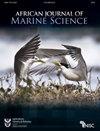Sensitivity simulation of sea surface temperature variability in coastal waters off East Africa in relation to the Indian Ocean Dipole
IF 1.4
4区 生物学
Q3 MARINE & FRESHWATER BIOLOGY
引用次数: 0
Abstract
East African coastal waters in the tropical western Indian Ocean experience strong seasonality which varies yearly, leading to the establishment of a prominent interannual Indian Ocean Dipole (IOD). This has a significant influence on regional and global socio-economic, climatic and human development. Sea surface temperature (SST) variability in these waters and its association with ocean–atmosphere feedbacks and internal subsurface ocean dynamics in relation to the IOD is the subject of this study. The research used reference simulation accompanied with sensitivity simulations with forcings from higher frequency variabilities against climatological signals of ocean–atmosphere or internal subsurface ocean dynamics from 1980 to 2007. Wind forcing with higher-frequency variabilities was applied in all simulations. Cooling and warming during pure and positive IOD events leading El Niño events in the region is caused by a combination of both surface heat fluxes associated with ocean–atmosphere feedbacks, and internal subsurface ocean dynamics, from July and peaking in August and October, respectively. Such processes also dominate the warming (cooling) in the region during pure El Niño (La Niña) events from July to December (July to October) where the SST patterns extend southwards. The warmest (coolest) SST anomalies during positive (negative) IOD events co-occurring with El Niño (La Niña) events stay longer than other events, being characterised by bimodal peaking in August and December. Such SST patterns are significantly forced with ocean–atmosphere feedbacks that might be associated with Walker circulation driving links between the Indian and Pacific oceans; however, the peaking in August might be enhanced by small ocean dynamics off the Somali coast, probably owing to the existing upwelling systems during these conditions.东非近海海面温度变化与印度洋偶极子关系的敏感性模拟
热带西印度洋的东非沿海水域经历了强烈的季节性,每年都在变化,导致了显著的印度洋偶极子(IOD)的形成。这对区域和全球的社会经济、气候和人类发展产生了重大影响。这些水域的海面温度(SST)变化及其与海洋-大气反馈和与IOD相关的内部地下海洋动力学的关系是本研究的主题。该研究使用了参考模拟和灵敏度模拟,对1980年至2007年海洋-大气或内部地下海洋动力学的气候信号进行了更高频率变化的强迫。在所有模拟中都应用了频率变化率较高的风力。导致该地区厄尔尼诺事件的纯IOD和正IOD事件期间的冷却和变暖是由与海洋-大气反馈相关的地表热通量和内部地下海洋动力学共同造成的,从7月开始,分别在8月和10月达到峰值。在7月至12月(7月至10月)的纯厄尔尼诺(La Niña)事件中,这种过程也主导了该地区的变暖(冷却),其中SST模式向南延伸。在与厄尔尼诺(La Niña)事件同时发生的正(负)IOD事件期间,最热(最冷)的SST异常持续时间比其他事件长,其特征是在8月和12月达到双峰峰值。这种SST模式与海洋-大气反馈密切相关,可能与Walker环流驱动的印度洋和太平洋之间的联系有关;然而,索马里海岸附近的小海洋动力学可能会增强8月份的峰值,这可能是由于在这些条件下存在上升流系统。
本文章由计算机程序翻译,如有差异,请以英文原文为准。
求助全文
约1分钟内获得全文
求助全文
来源期刊

African Journal of Marine Science
生物-海洋与淡水生物学
CiteScore
2.60
自引率
16.70%
发文量
17
审稿时长
6-12 weeks
期刊介绍:
The African (formerly South African) Journal of Marine Science provides an international forum for the publication of original scientific contributions or critical reviews, involving oceanic, shelf or estuarine waters, inclusive of oceanography, studies of organisms and their habitats, and aquaculture. Papers on the conservation and management of living resources, relevant social science and governance, or new techniques, are all welcomed, as are those that integrate different disciplines. Priority will be given to rigorous, question-driven research, rather than descriptive research. Contributions from African waters, including the Southern Ocean, are particularly encouraged, although not to the exclusion of those from elsewhere that have relevance to the African context. Submissions may take the form of a paper or a short communication. The journal aims to achieve a balanced representation of subject areas but also publishes proceedings of symposia in dedicated issues, as well as guest-edited suites on thematic topics in regular issues.
 求助内容:
求助内容: 应助结果提醒方式:
应助结果提醒方式:


